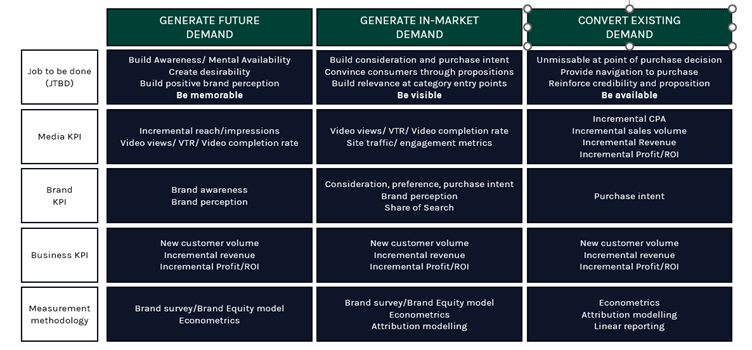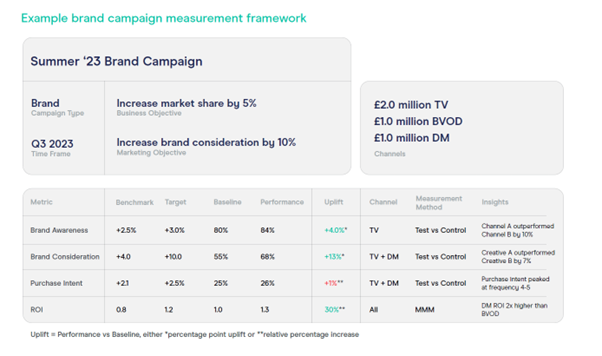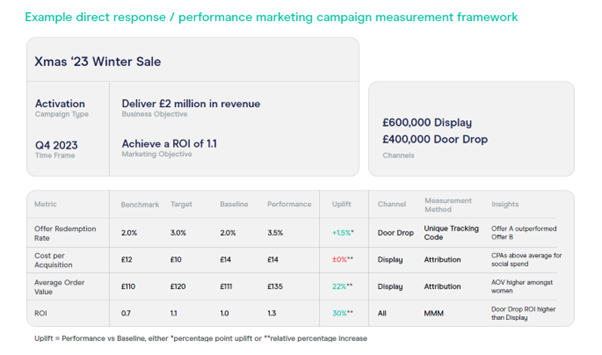Is your obsession with clicks costing you growth? Why marketers need a measurement reset!
24 Oct 2024

The importance of measurement.
Losing sight of the metrics that matter
A shifting focus from business outcomes to media outputs
As a result of the exponential increase in media metrics and KPIs on offer, focus shifted from the actual media outcomes for the brands and businesses. Now, admittedly, sales remained a focus, but only those sales that came from a narrow set of media channels, collected through online sales channels and in the immediate time frame. There is a lot of talk about marketing teams not speaking the “language of the boardroom” and this shift in focus to media KPIs has been a large contributor.
The rise of short-termism
Unless you’ve been living under a rock, wearing a blindfold and noise-cancelling headphones, this will not be a new concept or phrase. But the addictiveness of short-term, directly linkable sales, still blinds many brands and businesses to the reality of media contribution and incremental growth potential. This has been exacerbated by the demand for weekly reports demonstrating the impact of marketing spend on hard business outcomes.
Declining effectiveness, brand health and growth
The industry data shows that in the era of digital dominance, brand health has suffered. The short-term sales data has masked an overall decline in base sales for many businesses. The result is that whilst the digital marketing team has been high-fiving around the office on their latest last-click sales figures, the CFO has been watching total revenues decline.

A greater focus on measurement is the antidote to these negative impacts and can help marketers overcome these issues. But where to start? Below are our top tips on how to build a culture of measurement and set yourself up for success:
Re-connect your marketing and media outputs to overall business objectives
Review what your business is trying to achieve. Objectives tend to fall under 3 categories:
- Volume – The actual number of sales or whatever the ultimate conversion event is.
- Value – The revenue attached to the conversion events
- Profit – The margin being made on each conversion event
Whilst businesses always need to have a combination of all 3 to succeed, 1 will always be the priority and we should be pointing our marketing measurement efforts at delivering that priority metric.
It’s also important to remember that sometimes these 3 objectives can’t all be improved at the same time, and depending on the situational nuances of a business, its size and the market in which it operates, the ability to shift them all will change.
Create a measurement framework
A key issue in the digital age and the focus on last-click measurement, has been that the vast majority of media contribution to business outcomes has been completely missed, particularly outside of the bottom of the funnel.
We need to work to make sure there is an understanding of how our marketing spend is impacting mid and upper-funnel outcomes, by being clear about what metrics we expect to shift and having the methods in place to monitor and measure those shifts.



Invest in Experimentation and measurement
- Brand Search query volumes – indicating increased brand interest, aligned to increased brand visibility in other channels.
- Increases in Direct, Referral and Organic traffic in GA4 (or other web analytics platforms) – Often beneficiaries of indirect effects of paid media, look for increases in these figures alongside new or increased paid activity.
By Matt Dailey, member of the Measurement Taskforce and Media, Marketing and Measurement Consultant
Read the Value of Measurement report here.
Help shape the measurement conversation in the marketing industry by joining the DMA’s Councils here – contact the team for more details.
Please login to comment.
Comments